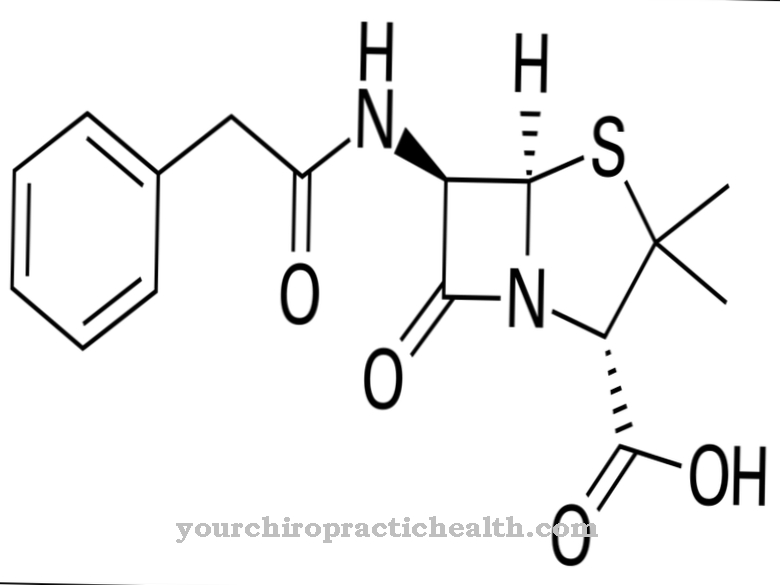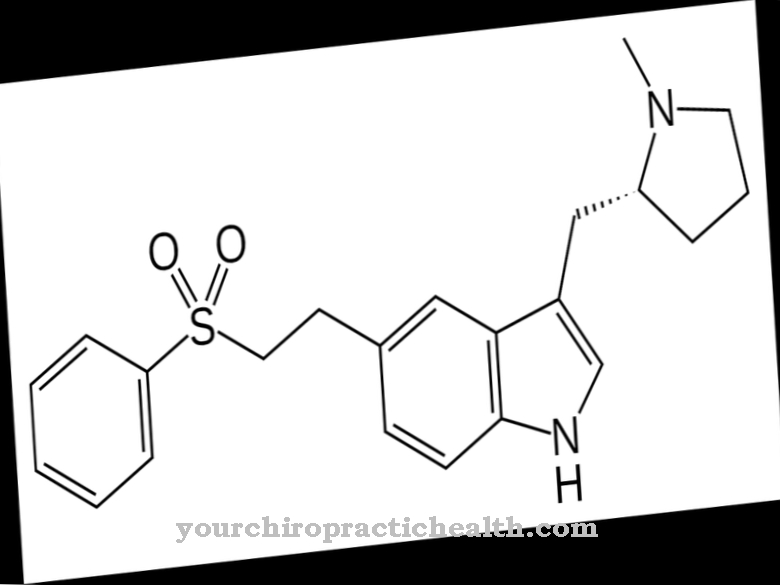The drug Torasemid belongs to the loop diuretics and is mainly used for dehydration. In addition to water retention, possible indications include high blood pressure and heart failure.
What is torasemide?
Torasemide is a loop diuretic. This group of diuretics works directly in the urine-producing system of the kidneys.
Because of their quite linear effect-concentration relationship, loop diuretics such as torasemide are classified as high-ceiling diuretics. Depending on the fluid intake, a urine volume of up to 45 liters per day can be achieved using the loop diuretic.
Pharmacological effect
The kidney filters metabolic end products from the blood and excretes them. To do this, it initially produces up to 200 liters of primary urine a day. This is concentrated in a complex system of so-called tubules, the Henle loop and collecting tubes. To do this, water is reabsorbed, so that ultimately between one and one and a half liters of secondary urine remain.
The ascending part of the Henle loop is the site of action of torasemide. Here up to 25 percent of the initially filtered sodium gets back into the blood. A transport protein is necessary for the re-absorption of sodium. Torasemide inhibits this protein. The sodium can then no longer be reabsorbed. This also increases the excretion of water.
At the same time, the so-called glomerular filtration rate increases. This means that the kidney corpuscles filter and produce more urine.
Medical application & use
Loop diuretics like torasemide are mainly used in the treatment of acute pulmonary edema. As a result of a heart disease, fluid collects here in the alveoli or in the lung tissue. The result is life-threatening breathing disorders. Torasemide can help remove excess fluid from the body.
Water retention in other organs such as in the abdomen or in the extremities are treated with torasemide. Such edema can develop in the context of heart, liver or kidney insufficiency and severely impair the functioning of the organs. In acute kidney failure, torasemide can help control the water balance, at least for a certain period of time.
Since the loop diuretic not only excretes more water but also electrolytes, torasemide can also be used to treat hypercalcemia. Hypercalcemia has too much calcium in the blood. Typical causes are malignant tumors or diseases of the endocrine system. In addition to calcium, loop diuretics wash out potassium. Another area of application is therefore hyperkalemia, as can occur, for example, in diseases of the kidneys or the adrenal glands.
In the past, torasemide was also used for forced excretion in cases of poisoning with bromide, fluoride and iodide, as well as in rhabdomyolysis, a dissolution of striated muscle fibers. To prevent disturbances in the electrolyte balance, a simultaneous supply of sodium, water and chloride is necessary.
You can find your medication here
➔ Medicines against edema and water retentionRisks & side effects
Loop diuretics such as torasemide are highly effective and must therefore be used carefully. Particularly in the case of patients with a disturbed electrolyte or acid-base balance, a close-knit balance of the water balance as well as an appropriate substitution of electrolytes is essential.
Due to the increased excretion of electrolytes, torasemide must not be used in the event of a sodium or potassium deficiency. Its use is contraindicated even with complete urinary retention. The drug must also not be used during breastfeeding. If the use of the drug is essential, breastfeeding must be done beforehand.
Long-term use can lead to so-called hypovolemia due to excessive drainage. With hypovolaemia, the circulating blood volume is reduced. This manifests itself through symptoms such as dizziness, headache and hypotension. In severe cases, patients can become dehydrated.
The increased excretion of potassium and protons can lead to hypocalemic acidosis. In rare cases, patients may also have low levels of sodium in their blood.
Increased absorption of uric acid can also lead to hyperuricemia, which can lead to gout attacks. Some patients develop hearing damage in the high frequencies up to complete deafness under treatment with torasemide. However, this effect usually only occurs during treatment; permanent damage is very rare.




























.jpg)